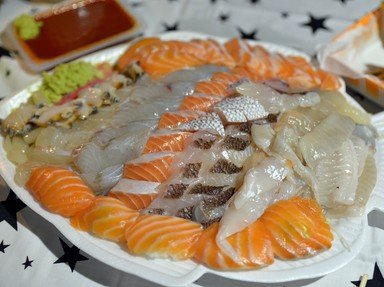
Now Sashimi, Now You Don't Trivia Quiz
Sashimi, the thinly-sliced cuts of seafood served for your enjoyment with a side of soy sauce and perhaps wasabi. A staple of Japanese cuisine, can you match the cut of fish to its Japanese name?
A matching quiz
by LeoDaVinci.
Estimated time: 3 mins.